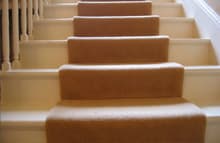
Water Damage Info & Tips
When it comes to water damage, it is critical to act fast if you want to salvage your possessions. Your first goal should be to remove as much moisture as possible from all surfaces. Below are some helpful tips that you can use immediately in a water damage situation:
- Depending on the amount of damage, you can try to dry out books by putting unfolded paper towels between groups of pages and standing the book up on its edge in a fan shape. If the covers are also wet, place paper towels under the book and periodically replace when needed. Also, remember to flip the book on the other edge to ensure even drying.
- Make sure that the seals on every window are tight. Replace the caulk as needed, to avoid any water seepage.
- Inspect your shower for leaks and replace any old or brittle caulking. Check your sink and toilet as well. Water stains around the toilet may be indicative of some kind of damage to the rim and tank seals.
- Regularly examine your ice maker, dishwasher, sinks, and garbage disposal for any kind of leak. Also, replace the hoses to these appliances every five years, this will significantly reduce the chance of leaks.
- Inspect the washing machine hose for signs of brittleness or corrosion. We recommend changing from the standard rubber hoses to stainless steel reinforced hose. This reduces the likelihood of leaks, and works towards a longer life for your appliance. Also, consider installing a water supply box to your washer. This shut-off valve can come in handy during vacations.
- Check your hot water heater for leaks and corrosion. Rust is a sign of tank failure and it is important to rectify that quickly.
- Keep valuables, keepsakes, and other memorabilia not often used or displayed in plastic storage containers. They are relatively inexpensive and are good for weathering flood conditions.
- Winterize any exterior faucets (if it applies).
- Turn on the air conditioning to help dry your home out in the summer. Open the windows in the winter to release trapped air.
- Remove artworks and paintings from the walls if necessary.
- Hang area rugs to dry outside or inside.
- Wet upholstery cushions should be removed from the frame and propped up to dry immediately.
- Place plastic under all furniture legs if the furniture is not plastic to prevent discoloration or bleeding.
- If your ceiling is sagging, punch tiny holes in it to relieve trapped water. Make sure to place something underneath the holes to avoid further water damage.
- Electrical appliances should be turned off while standing on wet carpets, floors or concrete floors. If you are electrocuted it will only add to your problems.
- Report water damage to your insurance company.
- Call a professional water damage restoration service.
Fire Damage
Fire damage to your home can be dangerous. Remember that the safety of you and your family is the most important thing. We recommend that you do not undertake fire damage restoration unless you are a trained professional. However, if you feel as if uou must act immediately, there are a few things that must be established before any action is undertaken. Remember, all action must be conducted with extreme caution!
Firstly, make sure your homes structure is still stable. Establish that there are no "hot spots" fallen power lines or poles or ash pits (holes filled with hot ashes usually from burnt trees and stumps). If possible, check the roof for any sparks or embers that may reignite, and, if your home has been deemed "safe" check indoor stability. Remember to keep checking your home periodically. Safety first!
Secondly, check the power supply. Most of the time is it turned off by the fire department as a precaution. If the power is turned off, make sure your main breaker is on. If the main circuit breaker is switched on and you are still without power, contact your utility company. If repairs are needed, you will have to contact a private contractor as you can not be reconnected until the repairs are approved by the utility company. Do not reconnect the power yourself!
Thirdly, wet all debris to decrease the chances/impact of dust particle inhalation.
Fourthly, any hazardous material must be removed from the premises and discarded. Please contact your local authority to find out about the correct disposal method.
Lastly, it is crucial to don protective gear when doing anything inside the affected area. Recommended gear includes:
- disposable plastic gloves to protect from bacteria while working on anything to do with plumbing or sewer pipes
- leather gloves to use when handling any debris
- a respirator with a particulate filter, N-95 respirator, or half-face respirator with a HEPA (High Efficiency Particulate Air) filter
- protective eye wear IE: goggles
- disposable coveralls, lab coat, or clothing
- a hard hat
- rubber boots or some sort of foot coverings
Now you are ready to begin work:
- Blow off or brush vacuum loose soot particles from all fabric surfaces
- Cover carpeted areas with old towels, sheets, etc. to protect against further soiling
- Throw out any open food, as it could be contaminated
- If your electrical power is off, clean out your refrigerator and freezer. Leave it open to air out
- Bring all affected clothes to a professional dry cleaner specializing in smoke damage.
- Clean all formica and chrome surfaces to prevent permanent tarnishing
- Wipe any smoke residue from porcelain fixtures to prevent etching
- Wipe the leaves of your indoor plants to remove smoke residue
- Change the furnace air filter if it uses forced hot air
- Secure damp cheesecloth over vents and windows to catch loose soot in the air
- If the outside temperature is above 60 degrees, air the house out to help reduce smoke odor
Anything above and beyond the above is considered to be in the realm of fire restoration. For your own safety, do not undertake fire restoration yourself. Improper fire restoration can compound a number of problems, ultimately resulting in more difficulty in restoring your home and higher repair costs.
Special Offers
Quick Contact
Testimonials
Before & After






























